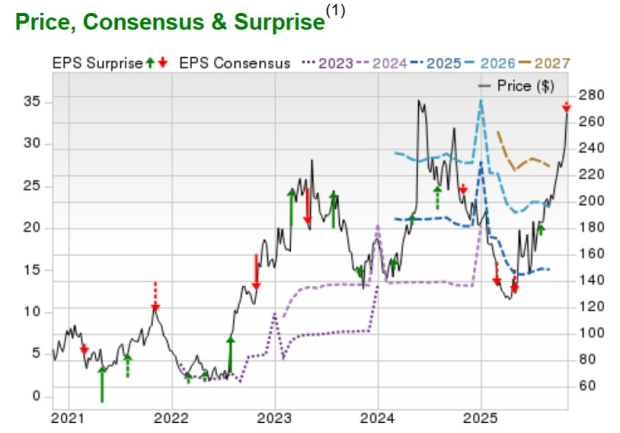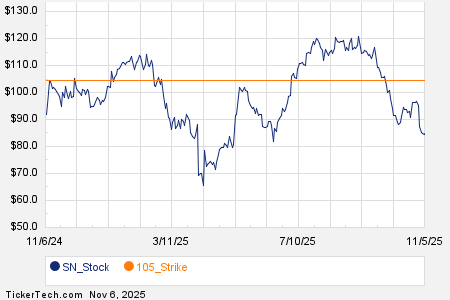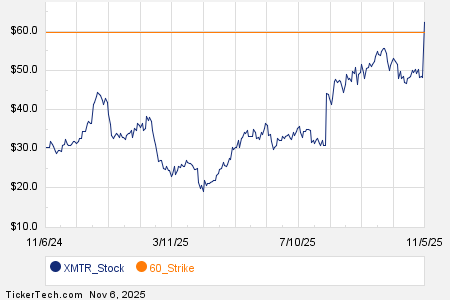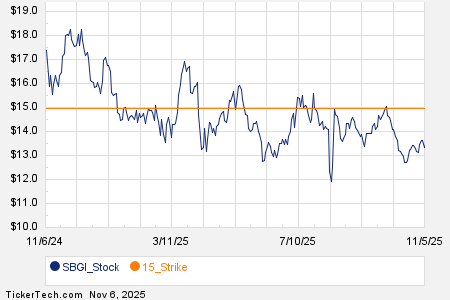Dollar Weakens as Market Anticipates Fed Rate Cut
The dollar index (DXY00) is down by -0.71% today. After reaching a four-month high on Wednesday, the dollar retreated as investors made profits ahead of the Federal Open Market Committee (FOMC) meeting, where a -25 basis point cut to the federal funds target range is widely expected. Additionally, disappointing U.S. economic reports contributed to the dollar’s decline; Q1 nonfarm productivity growth fell below expectations, while Q1 unit labor costs rose higher than forecasted. On a brighter note, weekly initial unemployment claims in the U.S. rose less than anticipated, indicating a stronger labor market—an indication that could support a hawkish Federal Reserve policy.
The latest figures show that initial unemployment claims increased by +3,000 to 221,000, which is below the expected 222,000 claims.
In terms of productivity, U.S. Q3 nonfarm productivity increased by +2.2%, below the expected +2.5%. Meanwhile, unit labor costs for Q1 climbed by +1.9%, surpassing estimates of +1.0%.
Currently, markets are pricing in a 100% chance of a -25 basis point rate cut by the Fed and a 0% chance for a -50 basis point cut in today’s meeting.
In foreign exchange news, EUR/USD (^EURUSD) is up by +0.79%. The dollar’s weakness encouraged short covering in the euro, which had fallen to a 4-1/4 month low earlier this week. Positive economic reports from the Eurozone, including a better-than-expected rise in September retail sales, have supported the euro’s recovery. Additionally, favorable German trade data boosted confidence in the currency. However, German industrial production saw a notable decline.
The Eurozone’s September retail sales rose by +0.5% month-over-month, beating the +0.4% forecast, and August’s figure was revised up to +1.1% from +0.2%.
Germany reported a drop in September exports of -1.7% month-over-month, which was an improvement compared to the anticipated -2.4%. Conversely, imports rose by +2.1%, again outperforming the expected +0.6%.
However, German industrial production dropped by -2.5% month-over-month, which was worse than the expected -1.0%.
ECB Governing Council member Knot expressed optimism about the Eurozone economy, noting a moderation in inflation and decreasing borrowing costs.
Swaps currently indicate a 100% probability of a -25 basis point rate cut by the ECB in its December 12 meeting, with a mere 17% for a -50 basis point cut.
The USD/JPY (^USDJPY) is down by -0.94%. The yen’s rise today was prompted by commentary from Japan’s chief currency official, who cautioned against excessive movements in the foreign exchange market. Following a hefty drop to a 3-1/4 month low against the dollar on Wednesday, today’s decrease in T-note yields has further strengthened the yen. Nevertheless, news about Japanese wages coming in below forecasts exerts downward pressure on the currency.
Japan’s wage figures for September revealed an increase of +2.8% year-over-year, falling short of the +3.0% expectation. Meanwhile, real cash earnings unexpectedly dropped by -0.1% year-over-year, contrary to the expected +0.1% growth.
Japan’s chief currency official, Mimura, noted the presence of one-sided, sudden movements in the currency markets and affirmed that appropriate actions will be taken against excessive fluctuations.
In commodity markets, December gold (GCZ24) is up by +25.70 (+0.96%), while December silver (SIZ24) is up by +0.549 (+1.75%). Precious metals are making a moderate recovery from the sharp declines seen on Wednesday, supported by a weaker dollar. The Bank of England’s recent decision to cut interest rates by 25 basis points, alongside expectations for a U.S. rate cut after the FOMC meeting, has bolstered the appeal of these assets as safe havens. Additionally, ongoing tensions in the Middle East are driving demand. Silver’s rise is further aided by encouraging news from China, indicating that October exports experienced their largest growth in over two years.
Despite the S&P 500 reaching a new record high today, which typically reduces safe-haven demand for precious metals, concerns remain over potential impacts from President-elect Trump’s tariff policies, which could hinder global trade and economic growth, further affecting industrial metals demand.
More Forex News from Barchart
On the date of publication,
Rich Asplund did not have (either directly or indirectly) positions in any of the securities mentioned in this article. All information and data in this article is solely for informational purposes. For more information, please view the Barchart Disclosure Policy
here.
The views and opinions expressed herein are the views and opinions of the author and do not necessarily reflect those of Nasdaq, Inc.






